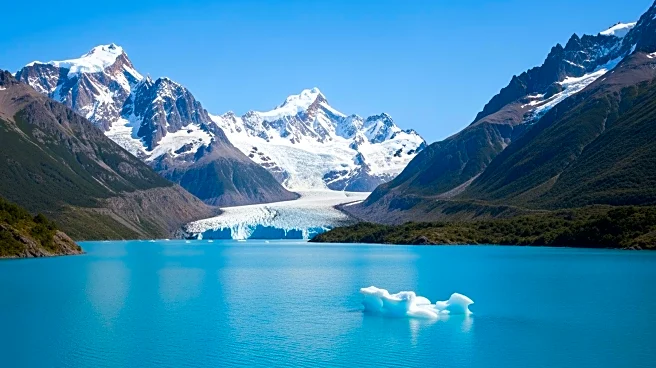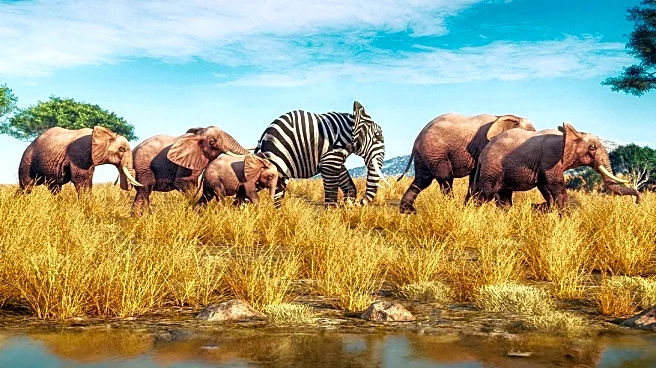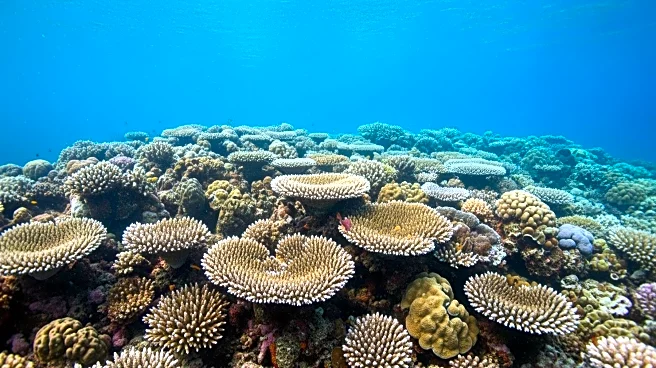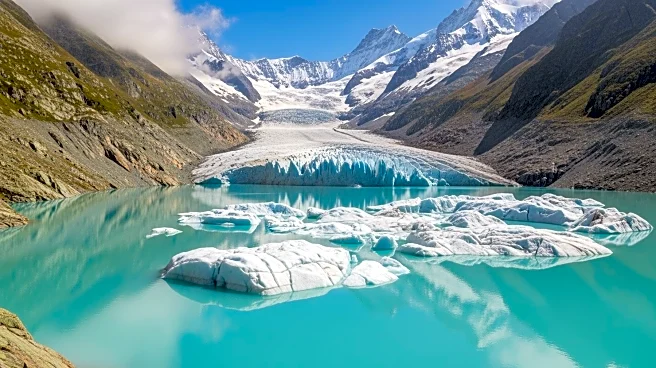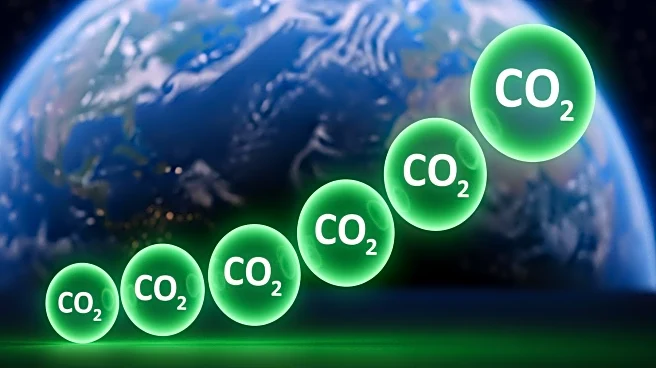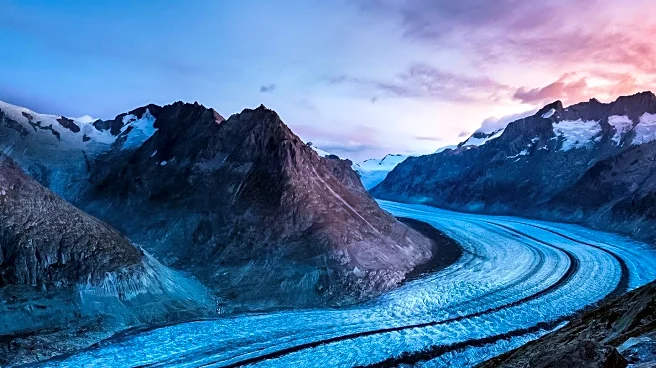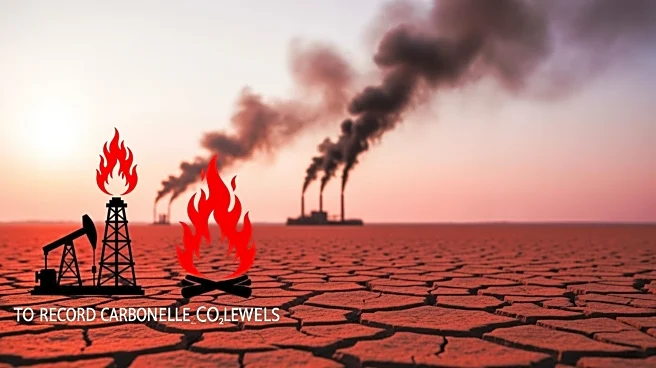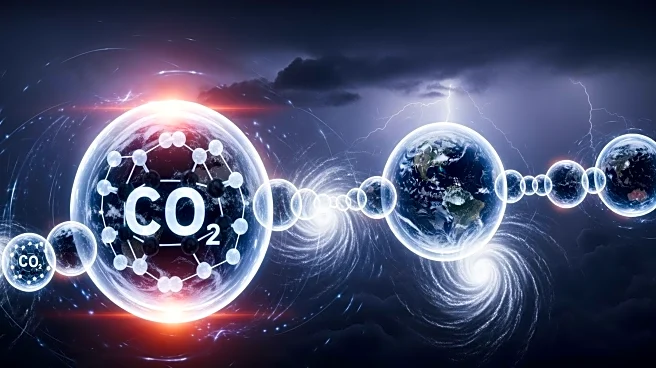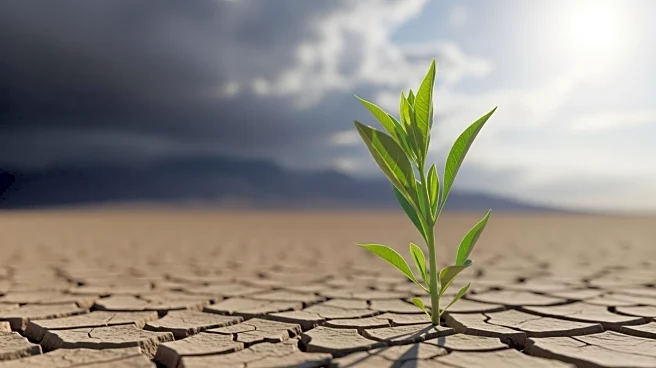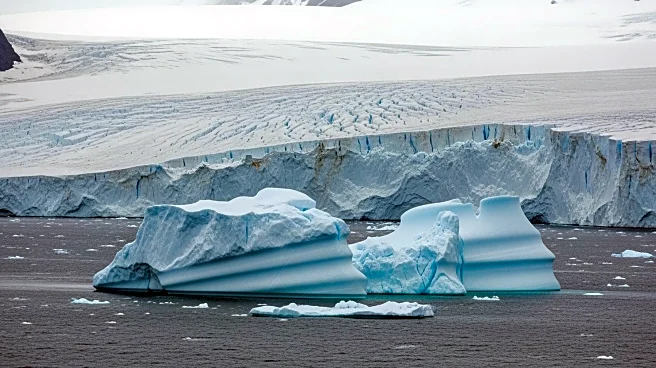What's Happening?
Satellite images from 1987 and 2024 reveal significant changes in the glaciers of Laguna San Rafael National Park, Chile. The Northern Patagonian Ice Field, a remnant of the once expansive Patagonian Ice Sheet,
has been receding due to global warming. The San Rafael and San Quintín glaciers, the largest in the region, have shown dramatic retreat over the decades. The San Rafael glacier, known for its active calving, feeds into Laguna San Rafael, a lake formed by the glacier's retreat. The images highlight the transformation of the landscape, with new proglacial lakes forming as glaciers melt.
Why It's Important?
The retreat of these glaciers is a clear indicator of climate change and its impact on the environment. As glaciers melt, they contribute to rising sea levels, which pose a threat to coastal communities worldwide. The changes in the Chilean glaciers underscore the urgent need for climate action and adaptation strategies. Monitoring these changes through satellite imagery provides valuable data for scientists and policymakers to understand the pace of glacial retreat and its implications for global sea levels.
Beyond the Headlines
The retreat of glaciers not only affects sea levels but also impacts local ecosystems and water resources. The formation of new lakes can alter habitats and affect biodiversity. Additionally, the sediment released by melting glaciers, known as 'glacier milk,' can influence water quality and aquatic life. These environmental changes highlight the interconnectedness of climate systems and the need for comprehensive environmental management strategies.
